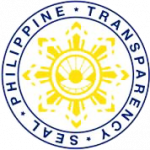- GOVPH
- About BOC
- Issuances
- Aduana Library
- Memoranda
- Memoranda for Reference Values
- Customs Administrative Order (CAO)
- Customs Administrative Order (CAO) 2025
- CUSTOMS ADMINISTRATIVE ORDER (CAO) 2024
- Customs Administrative Order (CAO) 2023
- Customs Administrative Order (CAO) 2022
- Customs Administrative Order (CAO) 2021
- Customs Administrative Order (CAO) 2020
- Customs Administrative Order (CAO) 2019
- Customs Administrative Order (CAO) 2018 and Older
- Customs Memorandum Order (CMO)
- Customs Memorandum Circular (CMC)
- Customs Memorandum Circular (CMC) 2025
- Customs Memorandum Circular (CMC) 2024
- Customs Memorandum Circular (CMC) 2023
- Customs Memorandum Circular (CMC) 2022
- Customs Memorandum Circular (CMC) 2021
- Customs Memorandum Circular (CMC) 2020
- Customs Memorandum Circular (CMC) 2019
- Customs Memorandum Circular (CMC) 2018 and Older
- Customs Special Order (CSO)
- Custom Training Circular (CTC)
- Joint Memorandum Orders (JMO)
- Trade
- News Room
- Port Updates
- HR Corner
- Quicklinks
- Infographics
- Bureau of Customs Webinar
- Auction and Sales
- Bid Opportunities
- Invitation to Bid / Request for Quotation / Invitation for Negotiated Procurement / Notice to Conduct Direct Contracting – 2023
- Invitation to Bid / Request for Quotation / Invitation for Negotiated Procurement / Notice to Conduct Direct Contracting – 2022
- Invitation to Bid / Request for Quotation / Invitation for Negotiated Procurement / Notice to Conduct Direct Contracting – 2021
- Invitation to Bid / Request for Quotation / Invitation for Negotiated Procurement / Notice to Conduct Direct Contracting – 2020
- Invitation to Bid / Request for Quotation / Invitation for Negotiated Procurement / Notice to Conduct Direct Contracting – 2019
- Invitation to Bid / Request for Quotation / Invitation for Negotiated Procurement / Notice to Conduct Direct Contracting
- Bid Documents
- Bid Supplement
- Summary of Awarded Contracts
- Summary of Contracts Awarded 2023
- Summary of Contracts Awarded 2022
- Summary of Contracts Awarded 2021
- Summary of Contracts Awarded 2020
- Summary of Contracts Awarded 2019
- Summary of Contracts Awarded 2018
- Summary of Contracts Awarded 2017
- Summary of Contracts Awarded 2016
- Summary of Contracts Awarded 2015
- Summary of Contracts Awarded 2014
- Summary of Contracts Awarded 2013
- Annual Procurement Plan
- Customs Knowledge Resources
- References
- Gender Equality and Diversity
- Philippine National Trade Repository
- Philippine Tariff Finder
- Authorized Economic Operator
BOC issues RCEP import, export guidelines
The Bureau of Customs (BOC) recently issued a set of guidelines outlining the conditions for obtaining preferential tariff treatment under the newly-implemented Regional Comprehensive Economic Partnership (RCEP) agreement.
Under Customs Memorandum Order (CMO) No. 12-2023 dated May 26, 2023, imported goods that originate from any of the 15 member countries are eligible to claim the preferential tariff rates provided by the RCEP. The CMO was signed by Customs Commissioner Bienvenido Y. Rubio, and made effective on June 2, 2023. The CMO likewise provided specific procedures for the issuance and acceptance of “Certificate of Origin”.
As part of the RCEP agreement, Certificates of Origin have been mandated to accompany goods as they are transported between member countries.
This official document attests the country of origin of the goods, allowing customs authorities, importers, and exporters to monitor the movement of goods within the RCEP trading bloc.
To qualify for the RCEP tariff rates, importers must obtain this certification along with a declaration of origin from exporters who have been authorized by the Philippines, as specified by the BOC.
The BOC tasked its Export Coordination Division (ECD) to scrutinize all submitted certificates of origin and applications for Approved Exporter status.
“ECD shall carry out verifications of the originating status of the goods upon request of the RCEP importing party or based on risk analysis criteria. Verification can be made thru the documents requested from the exporter or producer or by inspections at the exporter’s or producer’s premises,” the CMO read.
BOC, however, clarified that the final determination on the rate of duty shall be based on the assessment of the submitted documents from the importers.
On the other hand, exporters are required to submit an application with the ECD for the issuance of a Certificate of Origin for RCEP.
The application shall include all necessary supporting documents, such as an export declaration, commercial invoice, bill of landing/airway bill, and other relevant permits.
The goal of the RCEP is to eliminate tariffs on a minimum of 90 percent of the commodities traded between member countries, while strengthening regulations for non-tariff measures.
With the trade agreement, the Philippines retained its existing preferential tariff rates for 98.1 percent of the 1,718 agricultural tariff lines, as well as for 82.7 percent of the 8,102 industrial tariff lines.
Out of the 1,685 agricultural tariff lines that are being preserved at present rates, 1,426 will be maintained at a zero rate, while 154 will continue to be charged at their existing most favored nation rates, and will therefore not be included in any form of tariff concessions.
“In cases where the RCEP preferential tariff rate is higher than the applied rate at the time of importation, the importer shall be allowed to apply for a refund of any excess duties and taxes paid for originating goods,” BOC said.
The RCEP agreement has been implemented among all its member nations, consisting of China, Japan, South Korea, New Zealand, Australia, and 10 Association of Southeast Asian Nations (ASEAN) countries, which include the Philippines.#
ABOUT GOVPH
All content is in the public domain unless otherwise stated.






